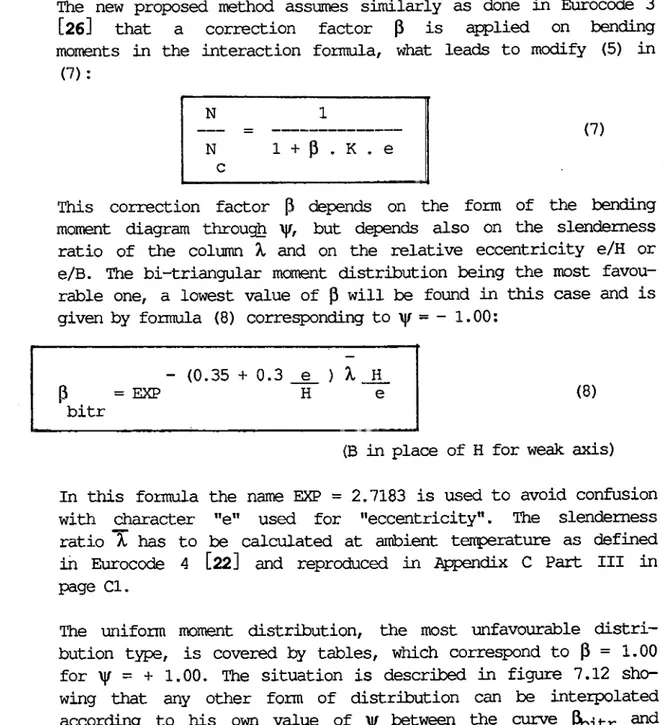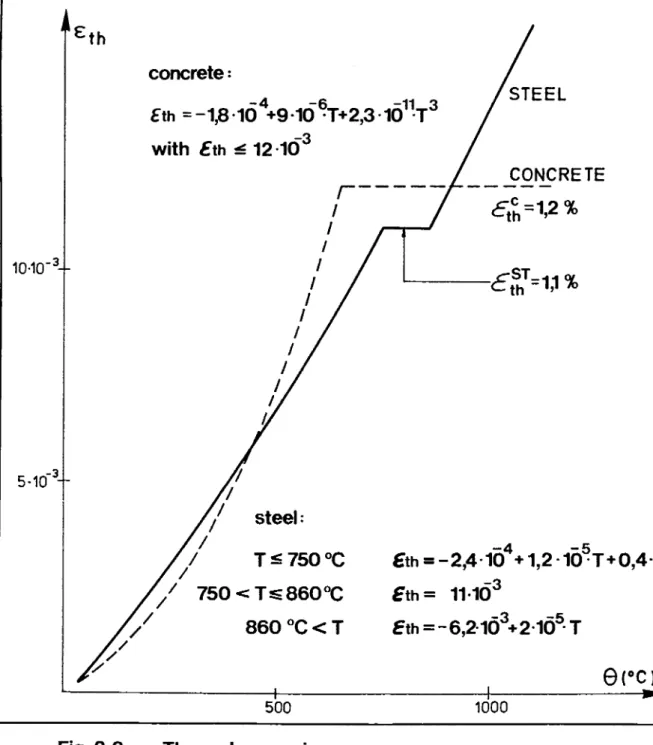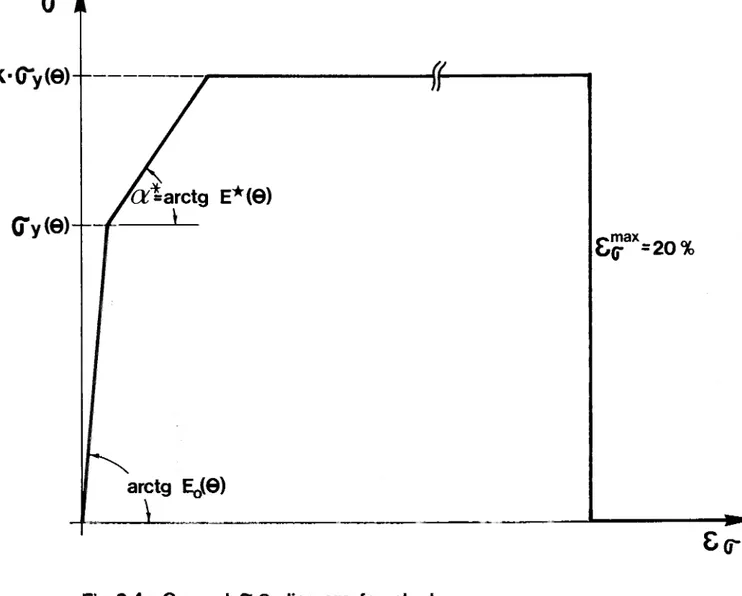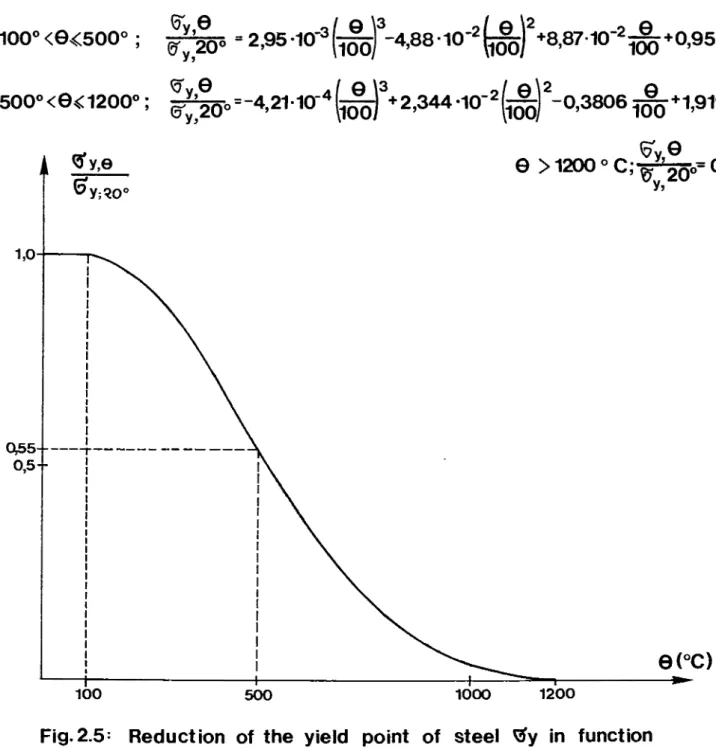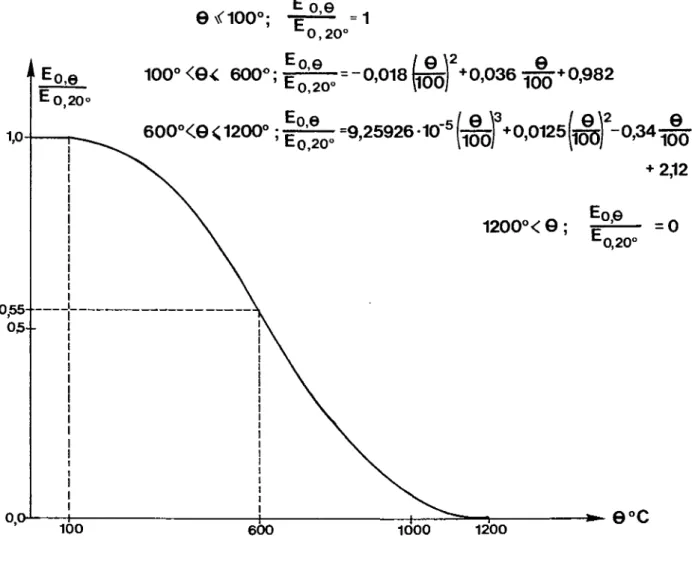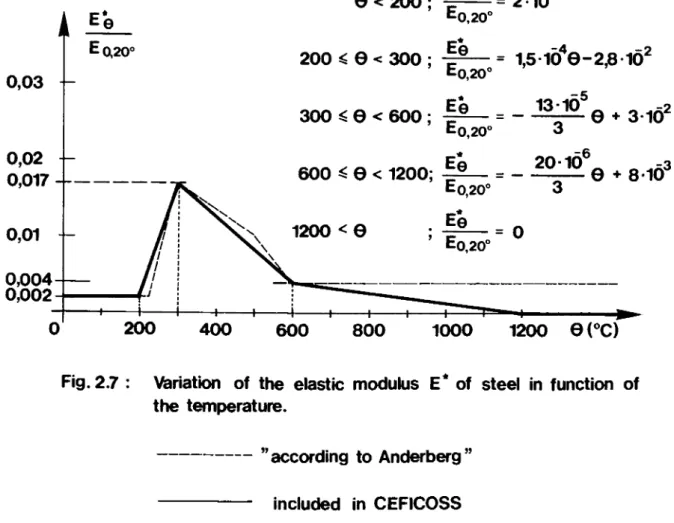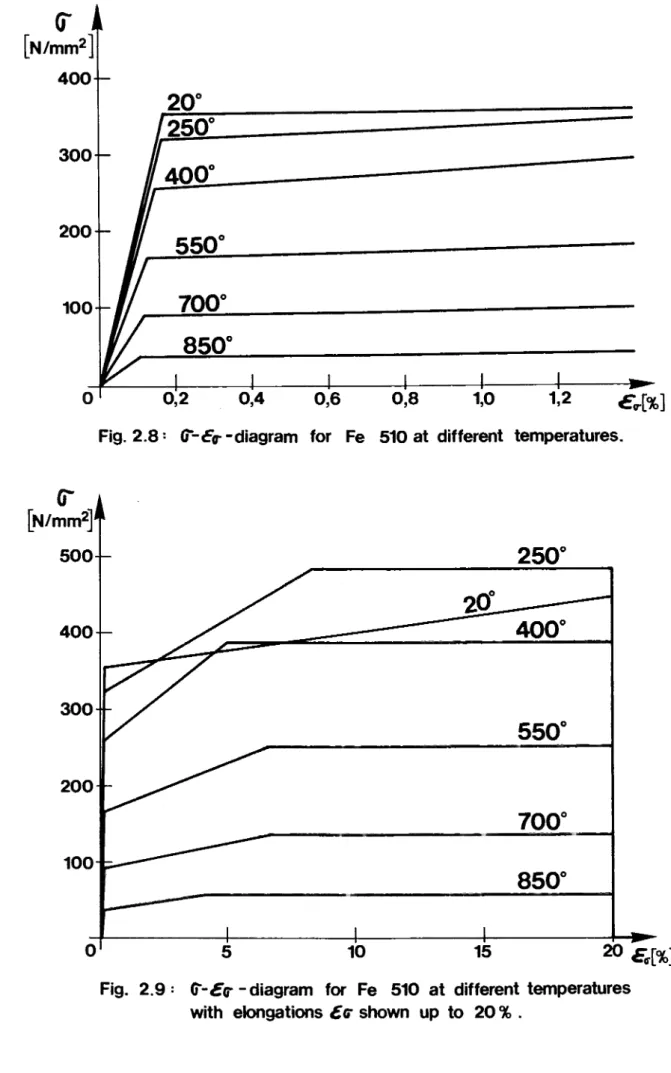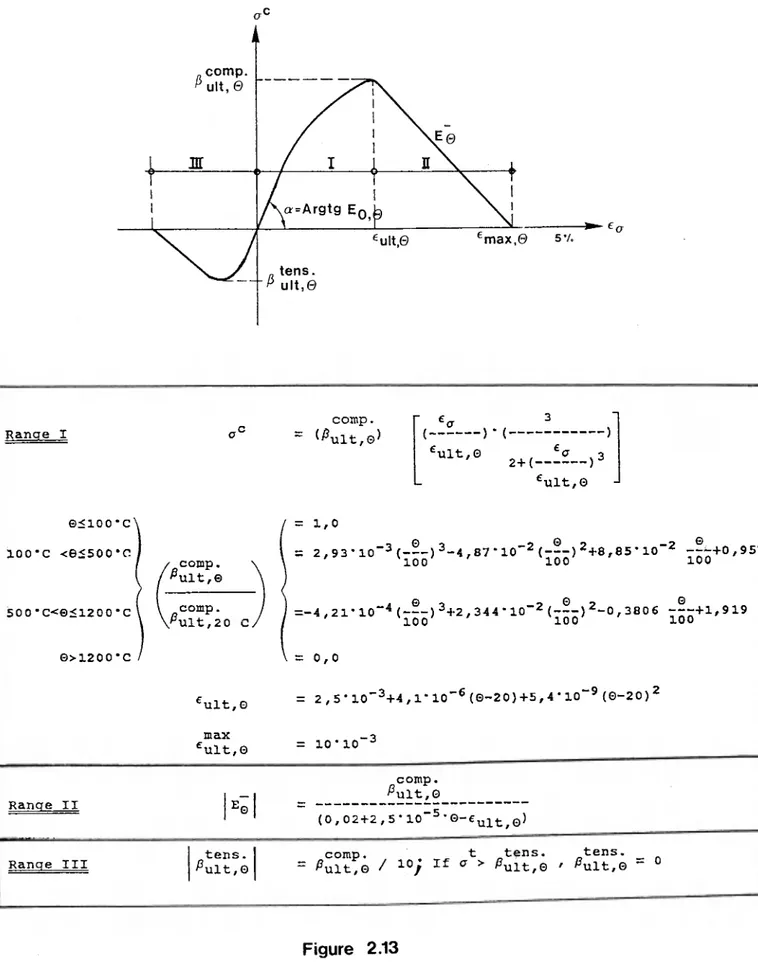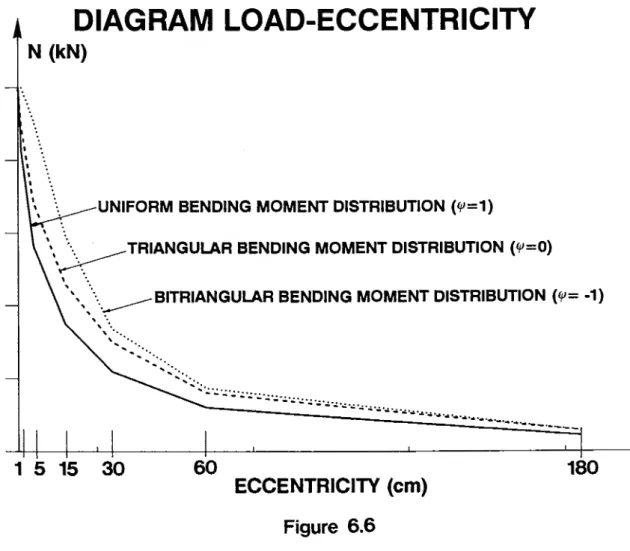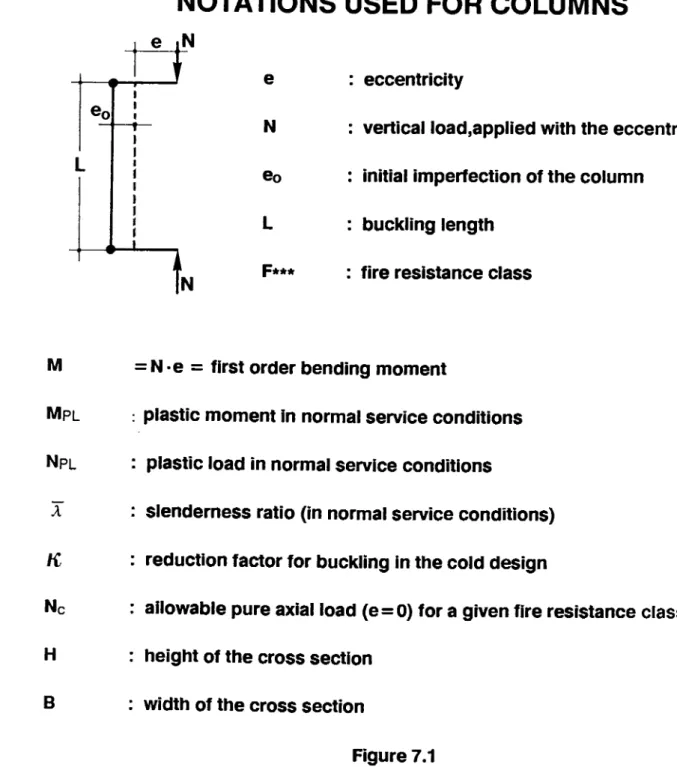* *
* +
Commission
of the
European
Communities
I \
i ί
I f
-i i -!
I-"r-
{"r-
r ['- ί-Properties
and
service performance
Practical
design
tools for composite
steel-concrete construction elements
submitted
to
ISO-fire
considering
the
interaction
between
axial
load
Ν
and
bending
moment
M
Refao-ll
Parts
I
-
II
III
* *
* +
Commission
of the
European
Communities
I \
i ί
I f
-i i -!
I-"r-
{"r-
r ['- ί-Properties
and
service performance
Practical
design
tools for composite
steel-concrete construction elements
submitted
to
ISO-fire
considering
the
interaction
between
axial
load
Ν
and
bending
moment
M
Refao-ll
Commission
of
the
European
Communities
k
&
k*
I
L
L
Lt
L
*L-L L
O
i
Kj-
U
Properties
and
service
performance
Practical
design
tools for composite
steel-concrete
construction
elements
submitted to
ISO-fire
considering
the
interaction
between
axial
load
N
and
bending
moment
M
Refao-ll
Parts
III-
III
ARBED
Recherches
66,
rue
de
Luxembourg
L-4221
Esch/Alzette
Contract
No 7210-SA/504
(1.10.1985-30.9.1988)
Final report
Commission
of
the
European
Communities
k
&
k*
I
L
L
Lt
L
*L-L L
O
i
Kj-
U
Properties
and
service
performance
Practical
design
tools for composite
steel-concrete
construction
elements
submitted to
ISO-fire
considering
the
interaction
between
axial
load
N
and
bending
moment
M
Refao-ll
Parts
III-
III
ARBED
Recherches
66,
rue
de
Luxembourg
L-4221
Esch/Alzette
Contract
No 7210-SA/504
(1.10.1985-30.9.1988)
Final report
Published by
the
COMMISSION OF THE
EUROPEAN
COMMUNITIES
Directorate-General
Telecommunications,
Information Industries
and
Innovation
L-2920
Luxembourg
LEGAL NOTICE
Neither
the
Commission
of the
European
Communities
nor any person
acting
on
behalf
of
the
Commission
is
responsible
for the
use
which
might
be
made
of
the
following information
Cataloguing
data
can
be
found at
the
end
of
this publication
Luxembourg:
Office
for
Official Publications of the
European
Communities,
1991
ISBN 92-826-2398-X
Catalogue
number:
CD-NA-13309-EN-C
©
ECSC-EEC-EAEC,
Brussels
·
Luxembourg,
1991
Printed
in France
Published by
the
COMMISSION OF THE
EUROPEAN
COMMUNITIES
Directorate-General
Telecommunications,
Information Industries
and
Innovation
L-2920
Luxembourg
LEGAL NOTICE
Neither
the
Commission
of the
European
Communities
nor any person
acting
on
behalf
of
the
Commission
is
responsible
for the
use
which
might
be
made
of
the
following information
Cataloguing
data
can
be
found at
the
end
of
this publication
Luxembourg:
Office
for
Official Publications of the
European
Communities,
1991
ISBN 92-826-2398-X
Catalogue
number:
CD-NA-13309-EN-C
©
ECSC-EEC-EAEC,
Brussels
·
Luxembourg,
1991
Printed
in France
CEC
Contract
No
7210SA/504
Practical
design
tools for
composite
steel-concrete
construction
elements
submitted to
ISO-fire
considering
the
interaction
between
axial
load
N
and
bending
moment
M
Refao-ll
1
October
1985
to
30
September
1988
Final
report
Department Manager
J.
B.
Schleich
Ingénieur
civil
des
constructions
Chef
de
service
Project Managers
J.
Mathieu
Ingénieur civil
des
constructions
L
G.
Cagot
Ingénieur civil des constructions
Service
«recherches
et
promotion
technique
»CEC
Contract
No
7210SA/504
Practical
design
tools for
composite
steel-concrete
construction
elements
submitted to
ISO-fire
considering
the
interaction
between
axial
load
N
and
bending
moment
M
Refao-ll
1
October
1985
to
30
September
1988
Final
report
Department Manager
J.
B.
Schleich
Ingénieur
civil
des
constructions
Chef
de
service
Project Managers
J.
Mathieu
Ingénieur civil
des
constructions
L
G.
Cagot
Ingénieur civil des constructions
Title of
research:
Contract:
Executive
committee:
Commencement
of
research:
Scheduled
completion
date:
Beneficiary:
Support
for theoretical part:
Practical design tools for composite steel-concrete
con¬
struction elements submitted to
ISO-fire
considering the
interaction
between
axial load
N
and
bending
moment
M
No 7210-SA/504
F
8
1.10.1985
30.9.1988
ARBED,
Luxembourg
(1)
Service Ponts
et
Charpentes
Université
de
Liège
(2)
Lehrstuhl
für Baustofftechnologie
und
Brandschutz
Bergische
Universitaet Wuppertal
Title of
research:
Contract:
Executive
committee:
Commencement
of
research:
Scheduled
completion
date:
Beneficiary:
Support
for theoretical part:
Practical design tools for composite steel-concrete
con¬
struction elements submitted to
ISO-fire
considering the
interaction
between
axial load
N
and
bending
moment
M
No 7210-SA/504
F
8
1.10.1985
30.9.1988
ARBED,
Luxembourg
(1)
Service Ponts
et
Charpentes
Université
de
Liège
(2)
Lehrstuhl
für Baustofftechnologie
und
Brandschutz
Bergische
Universitaet Wuppertal
ACKNOWLEDGEMENTS
This
research
consisting- in
the
setting
up
of tables for the
design
of
composite elements
submitted to ISO-fire
exposure has
been
performed by
ARBED
S.A.
during
the years
1985
to
1988
and
sponsored by C.E.C. ,
the
Commission
of the
European Community
(C.E.C. Agreement
iv97210-SA/504)
.
We
want
to
acknowledge
first
of
all
the
important
financial
support
from the
COMMISSION
OF
THE
EUROPEAN
COMMUNITY,
as
well
as
the moral
support given this
research
by all
the
members
of the
C.E.C.
EXECUTIVE
COMMITTEE
F8 "LIGHT
miGHT
STRUCTURES".
Special thanks are
due
to the
European
Experts
mentionned
in
§
1.3
of
this
report
who
accepted
to
collaborate
in
the
so-called
"ADVISOR?
CCMMmEE
FEEAO-II"
and so
contributed
efficiently
to
the
success
of
this
research.
The
various
opinions
and
advices
of
these
European
Experts
were
particularly
valuable.
We
wish
to
record our appreciation
of the cooperation of the
specia¬
lists
of
Professor
Dr.
Ing.
R.
BAUS,
Director
of
the
Department
for
Bridges
and
Structural
Engineering
of
Liège University
(Belgium)
,
and
especially
of Dr.
Ing.
J-M.
FRÄNSSEN,
for
the
improvement
of the
com¬
puter
code
CEFICOSS.
We
appreciated
alike
the
help
of
Prof.
Dr. -Ing.
W.
KLINGSCH,
"Lehrstuhl
für
Baustoff technologie
und Brandschutz,
Ber¬
gische Universität
Wuppertal"
(Germany)
.Thanks
are finally
due
to all,
who
by
any
means may
have
contributed
to
the establishment
of the very practical
and
unique
set of
STRUCTURAL
FIFE
DESIGN
TOOLS
given in this
FINAL
REPORT
.ACKNOWLEDGEMENTS
This
research
consisting- in
the
setting
up
of tables for the
design
of
composite elements
submitted to ISO-fire
exposure has
been
performed by
ARBED
S.A.
during
the years
1985
to
1988
and
sponsored by C.E.C. ,
the
Commission
of the
European Community
(C.E.C. Agreement
iv97210-SA/504)
.
We
want
to
acknowledge
first
of
all
the
important
financial
support
from the
COMMISSION
OF
THE
EUROPEAN
COMMUNITY,
as
well
as
the moral
support given this
research
by all
the
members
of the
C.E.C.
EXECUTIVE
COMMITTEE
F8 "LIGHT
miGHT
STRUCTURES".
Special thanks are
due
to the
European
Experts
mentionned
in
§
1.3
of
this
report
who
accepted
to
collaborate
in
the
so-called
"ADVISOR?
CCMMmEE
FEEAO-II"
and so
contributed
efficiently
to
the
success
of
this
research.
The
various
opinions
and
advices
of
these
European
Experts
were
particularly
valuable.
We
